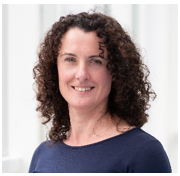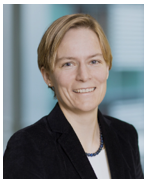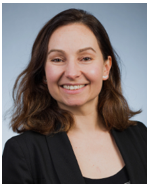How the women of the ESTRO medical physics community are supporting gender representativity
International-Day-of-Women-and-Girls-in-Science-FINAL
Tomorrow, Saturday 11 February 2023, marks the International Day of Women and Girls in Science. ESTRO, as scientific society, has a strong commitment to supporting gender equity and diversity within its committees and leadership.
Though women are still underrepresented in many STEM fields, particularly physics (1), Medical Physics is often considered one of the most gender-diverse subspecialties, with close to 30% of women in the profession (1). We caught up with Catharine Clark, Chair of the ESTRO Physics Committee, Daniela Thorwarth and Marianne Aznar, respectively Chairs of the Physics track for ESTRO 2022 and 2023, to hear their reflections on this day, on behalf of the Physics Committee.
“In 2023, we have more women than ever on the ESTRO Board or running for the Board, including our president and 50% of current Board members being women. We also have gender equity in our Physics Committee.”

Catharine Clark
Chair of the ESTRO Physics Committee
“Despite more and more young women are entering the field of medical physics #WomenWhoCurie, still most speakers in symposia and debates in the physics track are men. Very happy to see that the proportion of women active in the physics track is increasing each year.”

Daniela Thorwarth
Chair of the ESTRO 2022 Physics Track
“The “Women in Physics” group was created in 2019 within ESTRO: This virtual network will allow us to identify future talents amongst the membership, and help us increase the number of women amongst invited speakers or ESTRO task force members.”

Marianne Aznar
Chair of the ESTRO 2023 Physics Track
Did you know?
- In a 2018 IOMP (International Organization for Medical Physics) study, 93 countries provided data reporting a total number of MP 29,179 from which 8,702 were women (29.8%) and 20,477 men (70.2%) (1).
- Female representation in the global MP workforce is still far from the 50% United Nations Sustainable Development Goal and 40% European Commission target (1).
- Female representation in higher hierarchy positions in the global MP workforce is low (1).
- Although the percentage of female faculty members has been increasing, women remain underrepresented in the field. According to a 2017 report, 27.7% of radiation oncology faculty were women (2).
- Gender representation in leadership positions in medical physics does not reflect the percentage of women working in the field (2).
- Women are typically given smaller research grants than their male colleagues and, although they represent 33.3% of all researchers, only 12% of members of national science academies are women (3).
- Female researchers tend to have shorter, less well-paid careers. Their work is underrepresented in high-profile journals and they are often passed over for promotion (3).
- In 2019, women represented the majority of the population that is tertiary-educated and employed as professionals or technicians in the fields of science and technology at European level (53.7%). However, women were less represented among the population of employed scientists and engineers at the European level (41.3%) (4).
- Over the last decade, the EU has seen positive developments to achieve gender balance in the overall pool of doctoral graduates. Despite this progress, in 2018, women represent around one-third (32.8%) of the total population of researchers at the European level (4).
- At both the European and country level, women researchers account for a lower proportion of the economically active population compared to men researchers. However, the average growth rate of women researchers was 3.9% between 2010 and 2018, indicating some positive changes over time (4).
- At both European and country level, between 2015 and 2019, women and men published a similar number of publications at early stages of their career. As authors become more senior, women published less than men, indicating a widening gender gap as the level of seniority increases (4).
- Women were significantly under-represented as inventors at EU level. During the time period 2015-2018, for every 100 patent applications held by men, women hold 12 (10.7% at EU-27 level) (4).
References
(1) Medical physics workforce: A global perspective
Virginia Tsapaki, Slavik Tabakov , Madan M Rehani
Phys Med. 2018 Nov;55:33-39. doi: 10.1016/j.ejmp.2018.10.012. Epub 2018 Oct 22.
(2) The state of gender diversity in medical physics
Elizabeth L Covington, Jean M Moran, Kelly C Paradis
Med Phys 2020 Apr;47(4):2038-2043. doi: 10.1002/mp.14035. Epub 2020 Feb 12.
(3) United Nations
https://www.un.org/en/observances/women-and-girls-in-science-day/
(4) 2021 She Figures Report (European Commission)
https://research-and-innovation.ec.europa.eu/document/download/0f479bb7-5d3f-4989-8e57-e7b8ab68d6b5_en